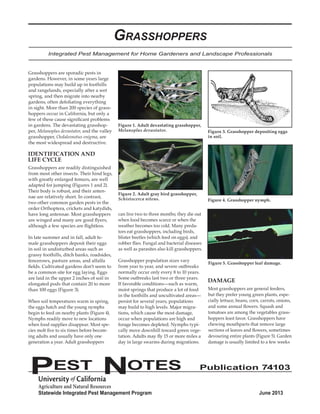Grasshoppers are sporadic pests that sometimes migrate in large populations and defoliate gardens. More than 200 grasshopper species occur in California, but only a few like the devastating grasshopper and valley grasshopper cause significant problems. Grasshoppers lay eggs in soil in fall which hatch the following spring. Nymphs molt several times before becoming adults. Population sizes vary yearly, with major outbreaks occurring every 8-10 years if conditions are favorable for several years. Grasshoppers prefer young plants and remove large sections of leaves, sometimes devouring entire plants. Management options during major invasions are limited, but trap crops and insecticides around garden borders can help control smaller populations.

